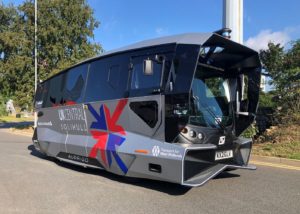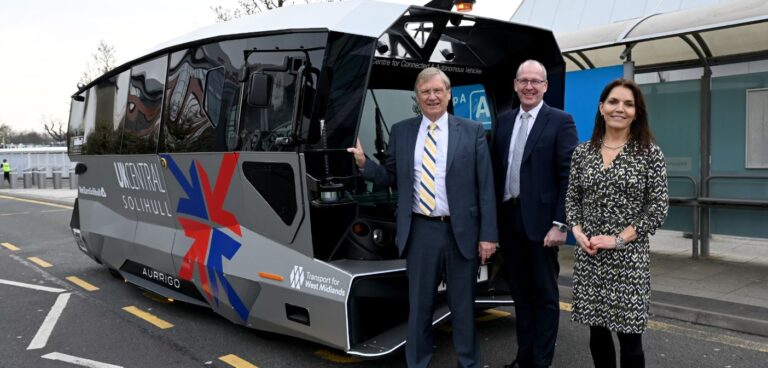A six-week trial of a self-driving shuttle has begun on roads around Birmingham Airport, as part of the latest phase of Solihull Council-led project to gauge how connected autonomous vehicles (CAVs) could be integrated into the regions transport network.
Last year, Solihull Council became the first local authority in the country to purchase its own fully electric autonomous shuttle using a grant from the Greater Birmingham & Solihull Local Enterprise Partnership.
Designed and manufactured by Coventry’s Aurrigo, the Auto-Shuttle can carry up to ten passengers and uses a suite of sensors, including lidar, to understand its surroundings and move around safely.
The zero-emissions self-driving shuttle was initially demonstrated at the National Exhibition Centre last Autumn, where it operated autonomously on Solihull roads for the first time, whilst carrying passengers along a pre-mapped section of Pendigo Way.

In this latest deployment, the shuttle will be used to transport passengers around a longer and much more complex route at Birmingham Airport while again interacting with other road users.
The trial route will provide airport staff with a new temporary service linking the departures entrance and Diamond House to Car Park 5.
For the purposes of testing, the shuttle will be limited to a top speed of 20mph. In line with current legislation a safety operator will be on-board at all times, who will have the ability to take control of the shuttle at any point if required.
As well as airport staff the passenger trials will also be open to members of the public who want to experience one of the first fully self-driving shuttles in the UK.
Cllr Ian Courts, leader of Solihull Council, said: “CAV technology has the potential revolutionise the way we get around our towns, cities and rural areas as well as transport goods. I’m excited to be the first council in the country to purchase our very own zero-emission, road-legal, shared use Connected Autonomous Vehicle and we are keen to put it to use.
“This project is all about looking at how we can practically and safely start to incorporate autonomous vehicles into our future transport infrastructure.”





